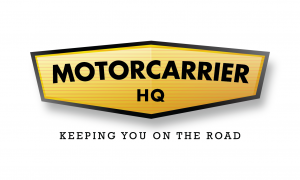January 27, 2022
Why DOT Audits Happen, and What You Can Do Now to Prepare

A Department of Transportation (DOT) audit can seem daunting to even the most prepared trucking company. Even businesses in total compliance with every rule in the book aren’t exactly thrilled to hear they’re being audited by the DOT. But despite the bad rap, audits are an important piece of the shipping ecosystem. They keep drivers safe and companies accountable to the regulations governing the industry at large. When it comes to hauling freight, there will always be a need for enforcing safe and regulation-friendly business practices and a DOT audit is a big part of that — even if they are a pain in the *&^$$.
The Department of Transportation is responsible for ensuring all Federal Motor Carrier Safety Regulations (FMCSR) are being properly observed and documented at all times. That means any business operating in the trucking industry is bound to see a compliance audit spring up sooner or later, which makes preparation and detailed documentation crucial for commercial carriers, drivers, vehicles, and shipping companies in general.
Here’s what you need to know about DOT audits including what often triggers them, what types of audits exist, how best to prepare your business for an audit, and what to do if things don’t go according to plan.
What Types of DOT Audits Are There?
An audit from the DOT is, unfortunately, about as fun as it sounds. The audit checks for a company’s compliance with all safety protocols via a thorough inspection of their entire shipping process, including the company’s detailed recordkeeping. Remember, as far as the audit is concerned, any safety measure, mechanical repair, or shipment issue that isn’t dutifully noted in a company’s books essentially never happened.
There are actually a few different types of audits the DOT can perform.
- Compliance Reviews
As mentioned above, compliance reviews check the books to ensure companies adhere to safety protocols throughout their various internal processes.
- New Entrant
The DOT is also responsible for performing “New Entrant” audits for businesses younger than 12 months. This is a good way to check in on new ventures and refresh them on rules and procedures.
- Security Audits
Security audits to take a closer look at driver safety and training practices. These audits are often completed at the same time as a hazardous materials audit.
- Hazardous Materials
Hazardous materials audits help drivers prevent spilling anything radioactive along the side of the interstate.
Compliance and New Entrant audits make up the bulk of DOT auditing activity, but it’s important to be prepared for any of the above in the case of a surprise safety inspection. While rare, they can do serious damage to a company’s reputation if caught off-guard.
What Triggers a DOT Audit?
Compliance audits can occur at any time as random spot-checks, so always be prepared for the unexpected. However, reports of bad driving, accidents, and poor CSA scores are known to trigger audits more immediately. Though it can initially seem like a hassle, businesses aiming to protect their drivers and keep other company assets like trucks and warehouses safe should be able to safely pass an audit without breaking a sweat.
How Should I Prepare for a DOT Audit?
Passing an audit relies on your business keeping extremely organized and up-to-date paperwork on file at all times. Though a relatively simple-sounding task, bookkeeping in the trucking industry can be pretty complex — especially when done in a compliant, organized fashion. We know how much of a headache it can be, which is why we offer an Audit Assistance Package.
All documentation clearing your drivers and vehicles for active service needs to be in order — that means proof of insurance, licenses, relevant medical certificates, driver safety history and tracked hours of service, not to mention any necessary vehicle markings and inspections needed to safely transport specific goods (namely hazardous materials).
If you’re up for some light reading, the DOT itself has compiled nearly 30 pages of forms and explanations detailing the exhaustive list of documentation you’ll be expected to produce in the event of an audit (fun!). You can also reference our abridged version below:
Driver-Related Documents
- Driver List
- Driver’s License
- Driver’s Records of Duty (ROD) and Supporting Documentation
- Driver’s Motor Vehicle Record (MVR)
- Medical Certificate
Vehicle-Related Documents
- Vehicle List
- Vehicle Inspection
- Hazardous Materials (HM)
Shipping Papers Carrier/Programmatic Related Documents
- Proof of Insurance
- Drug & Alcohol Program
- Accident Register
What Happens If The Audit Doesn’t Go Well?
There are three possible outcomes from a DOT compliance review:
- Satisfactory: You passed! Your company is compliant with commercial trucking safety standards.
- Conditional: There are some red flags, but you can still operate.
- Unsatisfactory: You failed, and cannot continue operations until corrections have been
Failing a trucker safety audit brings significant consequences down on your business, depending on the nature and measure of the violation in question. An audit will always include an explanation of the grade received and a corrective action plan to address the violations discovered by the auditor. Your business will in turn have to respond with detailed explanations of how this action plan was carried out within the allotted number of days.
Don’t be fooled by thinking getting slapped with a “Conditional” status is a pass. Your trucks are more likely to be stopped and subjected to time-consuming roadside inspections with a conditional marking, which neither clients nor drivers tend to appreciate. Even without an outright failing grade, conditional status can slow everyday operations until the designation is removed from your record.
Negative consequences can also come in the form of fines associated with specific violations. There are a whole host of things the DOT can fine you for, from withholding driver documentation (bad) to falsifying records (even worse), to working with hazardous materials without taking the proper safety precautions (seriously, don’t do any of these).
Whatever rating you receive, be sure to follow DOT recommendations for improvement so your business can run smoothly again as soon as possible.
—
Whether you’re part of a seasoned company, or just starting out, keeping your paperwork up-to-date and organized is the single best way to safeguard a business against a troublesome audit. The DOT doesn’t keep the answers to the test a secret — using the checklist provided, your company can self-evaluate whether or not all training, processes, and documentation are in order well before an unexpected audit arrives on your doorstep.




